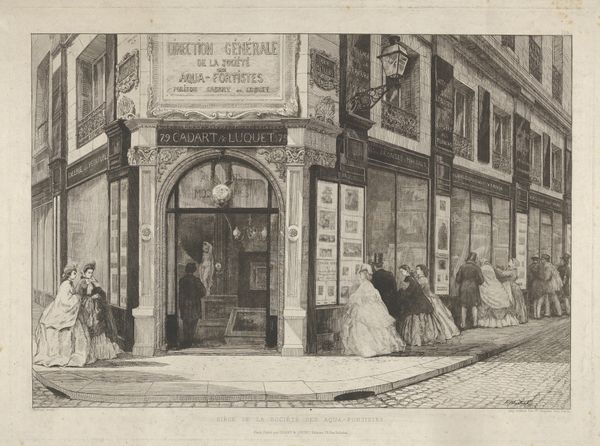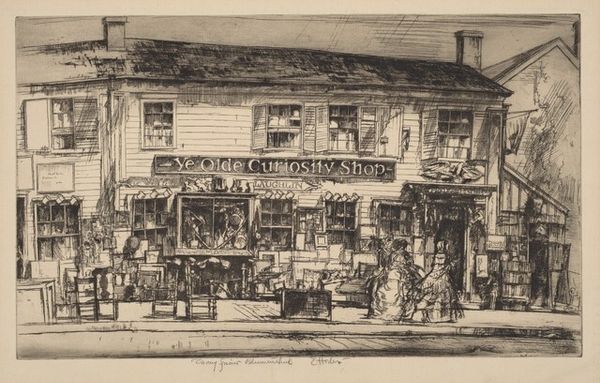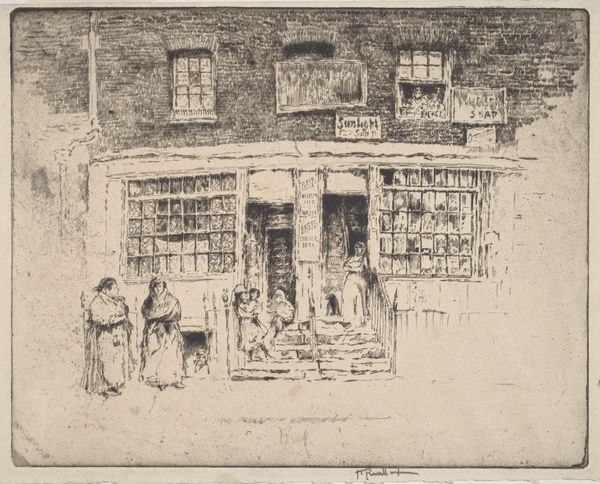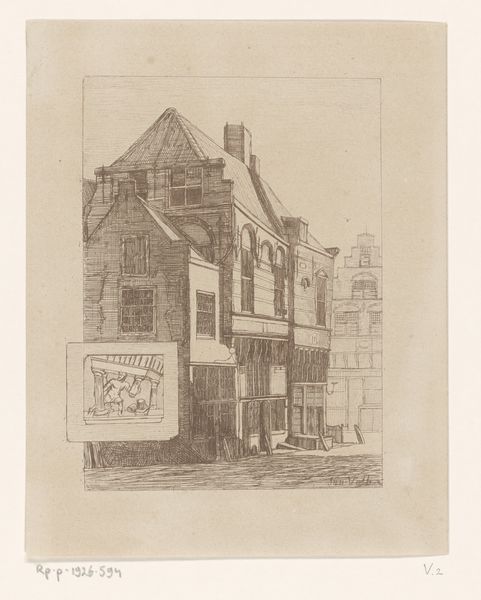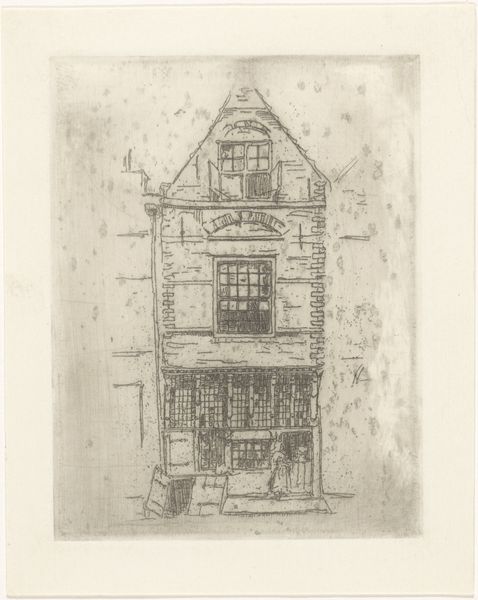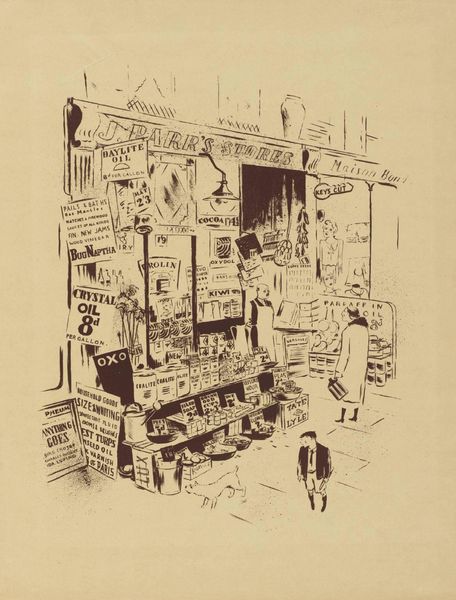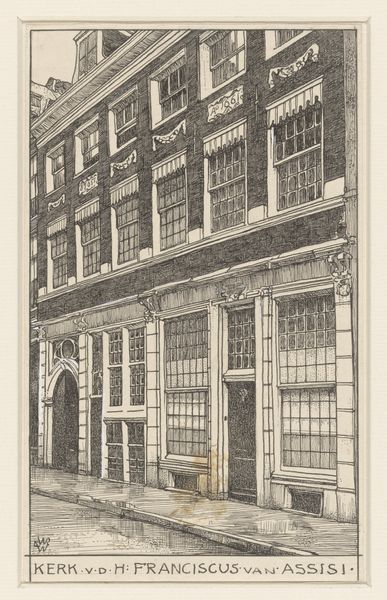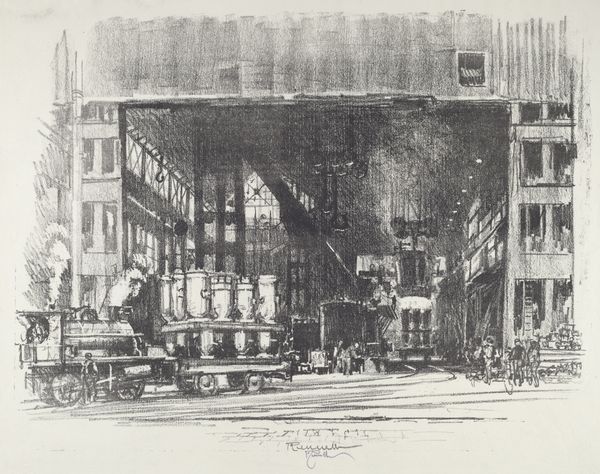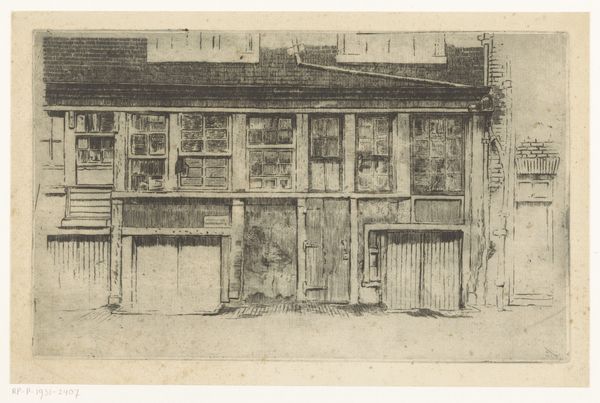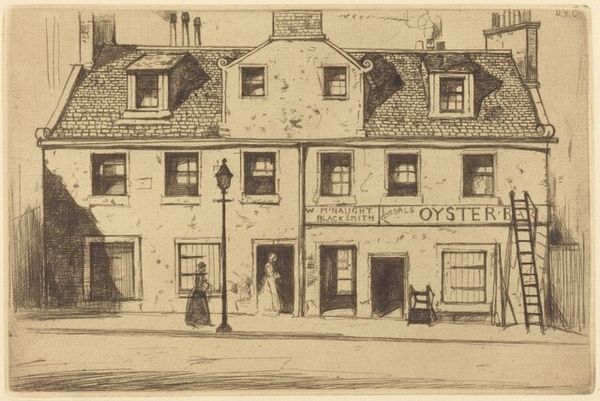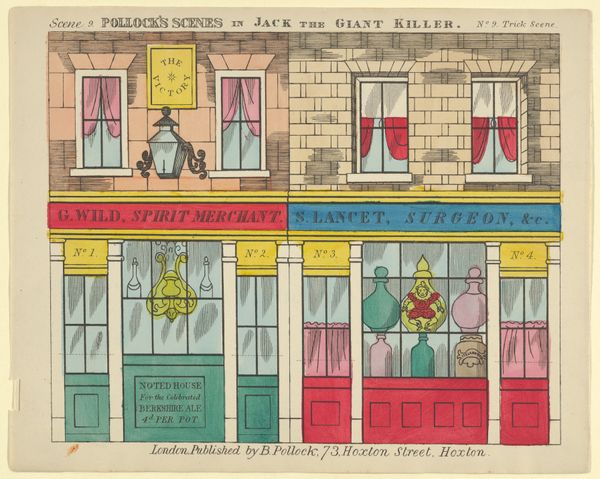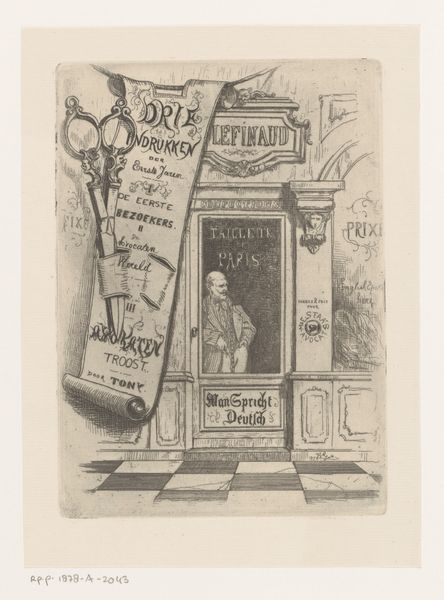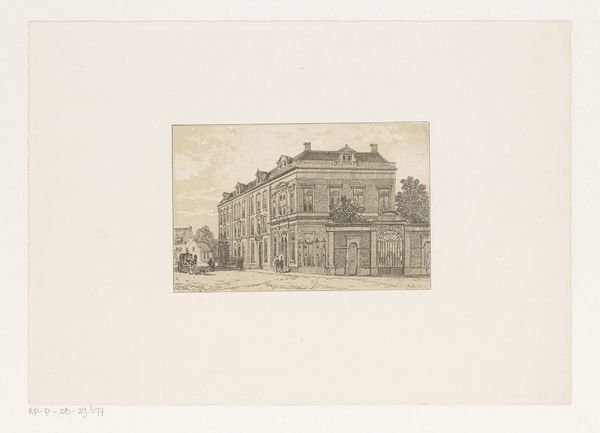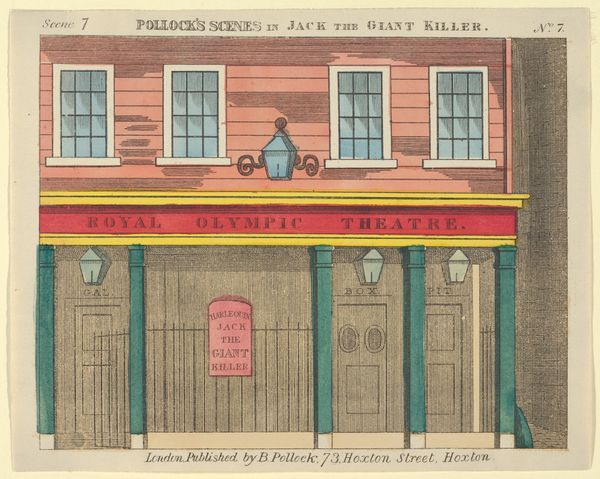
print, engraving
#
portrait
# print
#
line
#
cityscape
#
history-painting
#
engraving
Dimensions: height 168 mm, width 216 mm
Copyright: Rijks Museum: Open Domain
Editor: Here we have an engraving titled "Etalage van prentverkoper en uitgever John Redington te Londen," made around 1880 to 1937 by an anonymous artist. It depicts the storefront of a printer and bookseller, teeming with details. It really gives me the feeling of bustling London life at the time. What stands out to you in this print? Curator: As a materialist, my gaze is drawn to the conditions of its production. Look at the details! The engraving itself speaks of a laborious process, requiring skill and time. Each line etched into the plate, each character of text, tells a story about the artisan and the availability of printed materials to a burgeoning reading public. How do you think the method used for reproduction of prints like this changed art itself? Editor: Well, more people could have access to these images than to original paintings, so I guess that could democratize art appreciation somehow? I do think that this commercial aspect of the piece and all of those available titles that people could buy makes art less elite. Is this related to the rise of a middle class, maybe? Curator: Precisely. The print's subject matter, a shop, underscores the emerging culture of consumption. It also dissolves traditional distinctions: printmaking often considered 'craft' becomes a vehicle for history and 'high art' reproduction. The materials – paper, ink, the metal plate – and the means of distribution were crucial to how people understood art and information. The very act of purchasing prints democratized the means of production and access to art. The piece really raises questions on labor and consumerism. Editor: It’s interesting to think about how a simple print can reflect so much about the society that created it and the labour that sustains artistic production! Thanks! Curator: Absolutely. By focusing on the materials and methods, we reveal the social forces at play. Thanks for prompting me to think through all this once more.
Comments
No comments
Be the first to comment and join the conversation on the ultimate creative platform.
